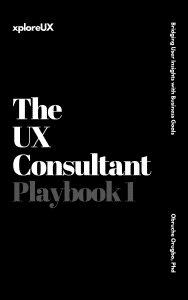
Advanced UX Training is a forward-thinking approach that equips employees with the skills to design, develop, and maintain user-centred products and services. Organisations that prioritise this training method often see improvements in productivity, motivation, and employee engagement. By dedicating resources to Advanced UX Training , companies demonstrate a commitment to user satisfaction as well as professional growth for their teams.
The practice goes beyond teaching employees the fundamentals of user experience. It fosters an environment where creativity, empathy, and problem-solving are encouraged at every level. When staff members learn to empathise with users and anticipate their needs, the result is a more seamless experience for both the end-user and the organisation. Such training can also reduce inefficiencies, spark innovation, and develop a shared sense of purpose across departments.
This article explores how advanced UX-specific learning programmes contribute to an uplift in employee performance, job satisfaction, and overall company success. It also highlights interviews with seasoned training experts who have seen remarkable outcomes after implementing structured, robust user experience education. Their experiences serve as evidence that investing in the right resources yields tangible benefits for everyone involved.
As digital interactions continue to expand, user experience knowledge has become a key differentiator for high-performing teams. While many organisations initially focussed on technical capabilities, they are now recognising that an effective user-centric strategy requires both conceptual understanding and practical expertise. It is no longer enough to rely solely on intuitive guesses; data-driven decisions, usability testing, and iterative design play a vital role.
Advanced UX Training addresses this growing need by bridging the gap between theory and practice. Employees learn to apply proven methodologies to real-world projects, streamlining processes and delivering optimum results. Moreover, exposure to UX strategies helps staff appreciate the significance of putting user needs and preferences at the forefront of product or service development.
By adopting Advanced UX Training , companies can cultivate more cohesive, adaptive teams. Employees who grasp the principles of user experience collaborate effectively because they share common goals and frameworks. This alignment reduces miscommunication across teams and encourages open dialogue about design choices, testing protocols, and strategic priorities. Ultimately, performance levels rise when employees understand both the value of UX and how to execute it well.
To illustrate the transformative power of user-focused education, we spoke to individuals who specialise in coaching and developing UX talent. One of these experts, Sarah Pennington, is a training consultant with more than a decade of experience. She has worked with several start-ups and established firms to create bespoke programmes that ensure employees confidently adapt to evolving user preferences. According to Pennington, Advanced UX Training serves as a catalyst for innovation by turning theoretical knowledge into actionable strategies.
Another valuable perspective came from James Wheeler, a former product manager who shifted to user experience consulting after noticing the positive outcomes when companies invested in targeted education. Wheeler emphasises that organisations must not only impart UX principles but also provide continuous feedback and opportunities to practise. He notes how Advanced UX Training fosters a sense of accomplishment in employees who can see the direct results of their work through higher user satisfaction, increased sales, or reduced churn rates.
Both Pennington and Wheeler shared success stories where employees, initially sceptical, became strong advocates of UX-led initiatives. The positive change in team dynamics was especially pronounced in cross-functional groups, where design professionals, developers, and business stakeholders learned to communicate better. These accounts reinforce the idea that a well-planned training scheme can bring substantial operational and cultural benefits.
Any programme designed to boost employee performance must include essential elements that encourage hands-on learning, critical thinking, and measurable outcomes. Advanced UX Training typically begins with a deep dive into user research techniques, including interviews, surveys, and observational studies. These activities help employees understand real user needs and develop empathy, a driving force behind meaningful designs.
Additionally, sessions on wireframing, prototyping, and usability testing offer practical insights into crafting intuitive interactions. Learners discover how small design tweaks can dramatically change user behaviour. By involving employees in real projects during training, they see firsthand how each aspect of UX contributes to overall product success. Through iterative testing, participants gain confidence in their ability to refine ideas, incorporate feedback, and generate fresh solutions.
Crucially, Advanced UX Training emphasises the importance of a continuous learning cycle. Even after initial sessions, employees should have the support and resources to keep refining their skills. This might involve ongoing workshops, mentoring programmes, and access to specialised tools. By nurturing a culture of daily improvement, organisations can remain agile and responsive to customer needs, allowing them to stay ahead in a competitive market.
Effective user experience instruction depends on leveraging the right mix of digital tools and platforms. These resources vary from collaborative design software to user testing portals that enable remote research. Advanced UX Training often involves hands-on exercises with prototyping tools such as Figma, Sketch, or Adobe XD. By experimenting within these applications, employees gain a better understanding of design processes and develop the confidence to iterate quickly.
Furthermore, user testing tools such as UserTesting, Maze, or Optimal Workshop allow trainees to conduct research, collate user feedback, and present their findings. This direct involvement with genuine user reactions accelerates learning and fosters a sense of ownership over the outcomes. Employees quickly learn which elements of the design resonate well and which require adjustments for clarity, accessibility, or efficiency.
For effective collaboration, communication tools also play a vital role. Channels like Slack, Microsoft Teams, or Trello facilitate swift feedback loops. Advanced UX Training integrates these platforms to ensure that team members can share ideas, coordinate tasks, and update stakeholders in real-time. The result is an interactive learning atmosphere where knowledge is transferred organically, mistakes become valuable lessons, and best practices emerge naturally.
Before committing time and resources, decision-makers naturally want to understand how to assess the impact of user experience learning initiatives. Advanced UX Training should align with clear performance metrics, such as improved user satisfaction scores, reduced support tickets, increased conversion rates, or shorter development timelines. These markers help organisations measure immediate progress and justify further investment.
Establishing a baseline is a crucial first step. By documenting current user satisfaction levels, engagement rates, or product churn, companies can track changes over time. Post-training evaluations often reveal sharp improvements, but the real benefit lies in the ability to sustain those gains by continuously refining approaches. Departments that once operated in silos may discover a renewed sense of collaboration, as shared UX objectives bring them together.
Leadership teams should also look for qualitative indicators, such as reduced friction in design meetings or more enthusiastic staff participation. Advanced UX Training supports these intangible shifts by empowering employees to articulate user-centred opinions more confidently. When management notices a positive shift in mindsets and work ethic, it is an excellent sign that the training programme is delivering substantial value.
When employees see the results of user-centric strategies, they are more inclined to cultivate a mindset of ongoing development. A core principle of Advanced UX Training is that learning should never be a one-time event. Instead, it should become part of the organisational culture, reinforced by regular workshops, peer coaching, and problem-solving sessions.
Encouraging the exchange of ideas is another critical element. Constructive feedback loops help employees broaden their perspective and refine their methods. By routinely sharing prototypes and research findings, teams learn to collaborate across departments more effectively. Additionally, peer recognition programmes can motivate staff to excel in their roles, further solidifying the training’s impact.
Advanced UX Training also supports diversity in skill sets. A well-rounded team benefits from a variety of backgrounds and approaches. By bringing diverse talents together and offering them advanced user experience education, organisations can tackle a broader range of challenges. Each member contributes a unique viewpoint, turning once complex hurdles into manageable tasks.
While the benefits of user-centred education are numerous, organisations often face hurdles when implementing new programmes. Busy schedules, budget constraints, and resistance to change can hinder progress. However, the advantages of Advanced UX Training become evident once employees recognise how it enhances collaboration, clarifies project goals, and reduces wasteful rework.
It is helpful for leadership to articulate the objectives of the training and demonstrate how it contributes to company aims. Transparent communication paves the way for buy-in from all stakeholders. Some employees might initially doubt the necessity of revisiting long-held processes, but evidence-based success stories and real-time data help alleviate those doubts.
In some instances, technical staff may be hesitant to adopt unfamiliar design tools. Encouraging them to see how Advanced UX Training complements their existing expertise can soften this resistance. Once they witness improvements in project outcomes—such as more intuitive interfaces, faster development cycles, and positive user feedback—fears often subside. Reinforcing the value of user-focused skills can unify teams and accelerate overall productivity.
To better understand how formal programmes can reshape an organisation, we interviewed Priya Shah, Director of User Experience at a mid-sized tech company. Shah emphasised that investing in structured learning fosters a shift in perspective that impacts every department. According to her, Advanced UX Training not only upskills individuals but also encourages colleagues to see one another as partners rather than competitors.
When Shah joined her company, UX knowledge was dispersed among a few motivated employees. Over time, she collaborated with human resources to develop a series of training modules. She involved experienced designers and product managers as mentors, ensuring participants had continuous guidance. Shah observed that staff retention improved as employees felt their professional development was being taken seriously. She notes, “Our people felt valued, which translated into higher job satisfaction and stronger performance metrics across the board.”
Shah also highlighted a rapid growth in design maturity, visible in product releases that required fewer late-stage revisions. “The best part,” she said, “is that Advanced UX Training helped everyone feel invested in problem-solving. We no longer have to push for user research or usability testing; the teams themselves drive these initiatives proactively.”
Even after completing formal sessions, organisations can reinforce positive habits by instituting regular refreshers and advanced-level workshops. Mentorship programmes, where experienced staff guide newer employees, enhance morale and help individuals hone their craft. By creating open forums or user experience communities of practice, teams can share wins and discuss emerging trends.
Providing dedicated time for these activities is essential. If employees feel rushed or overwhelmed, even the best training efforts could stall. Periodic assessments or pulse surveys can help leaders identify areas needing additional attention or support. Highlighting achievements, such as successful product launches or user-driven innovations, keeps enthusiasm levels high.
Moreover, introducing departmental or company-wide UX challenges can maintain the sense of excitement. Encourage employees to present fresh ideas to a review panel or a group of peers. Recognising outstanding proposals not only rewards creativity but also motivates others to experiment. These initiatives, combined with Advanced UX Training , generate ongoing enthusiasm and a habit of consistent learning.
Advanced UX Training offers a structured yet flexible approach that boosts employee performance and fosters an environment of mutual support and creative problem-solving. By pairing theoretical sessions with practical, real-world applications, companies can unlock the potential of every team member, from junior designers to senior product managers. The transformation is most evident when employees champion user experience principles independently, apply them to daily tasks, and celebrate the measurable gains.
Drawing from the experiences of dedicated training experts and programme directors, it is evident that this investment goes beyond superficial skill-building. It creates a paradigm shift in how teams collaborate, design processes evolve, and organisational objectives are met. By systematically adopting user-focused strategies and constantly refining them through training and practice, companies can sustain improvements in customer satisfaction and operational efficiency.
Whether you are a start-up aiming to strengthen your foothold or a large corporation seeking to innovate, Advanced UX Training has a proven track record of elevating teams. The journey may require patience and the willingness to embrace change, but the rewards are substantial: employees become more engaged, users enjoy a more intuitive experience, and the organisation as a whole reaps enduring benefits.







